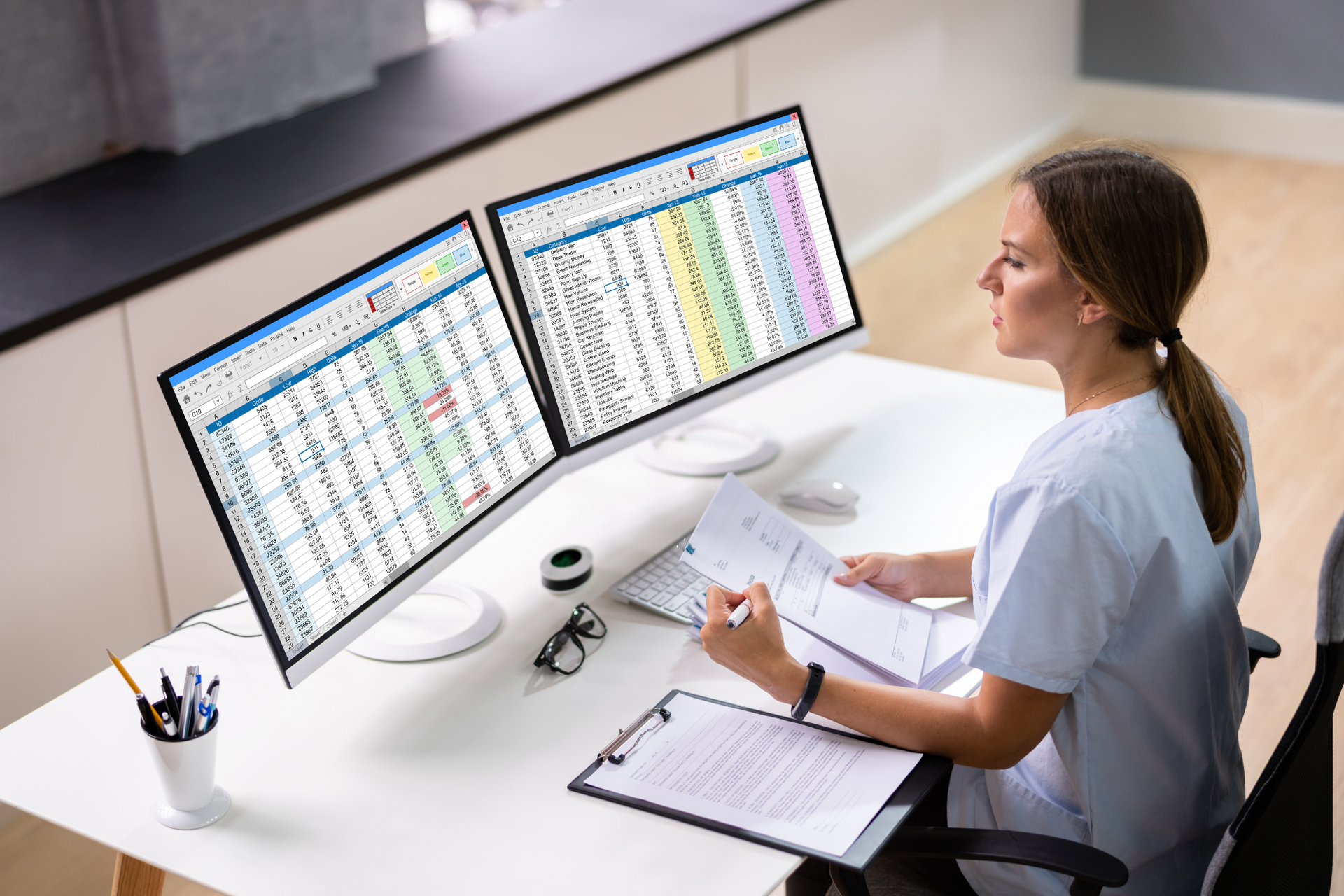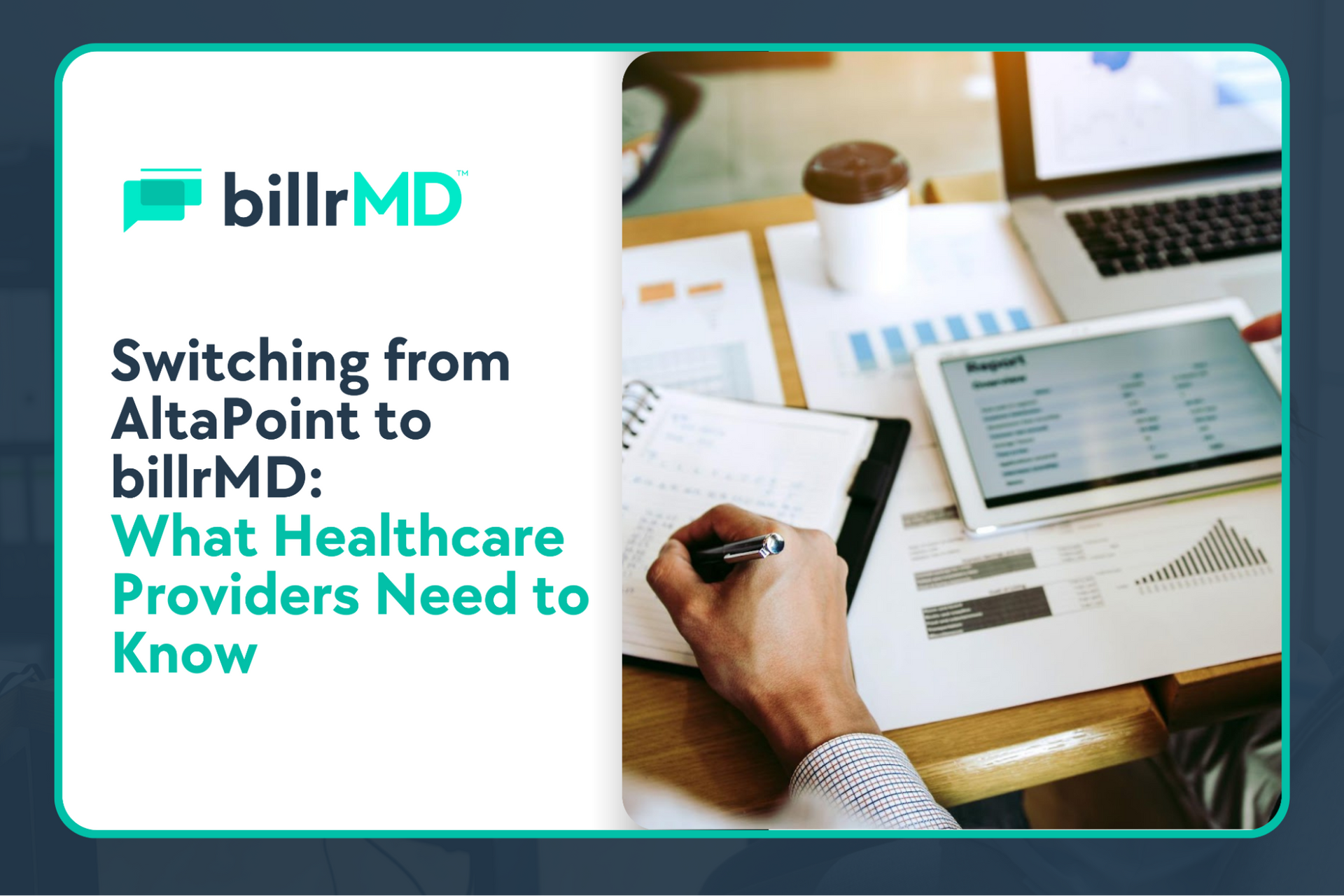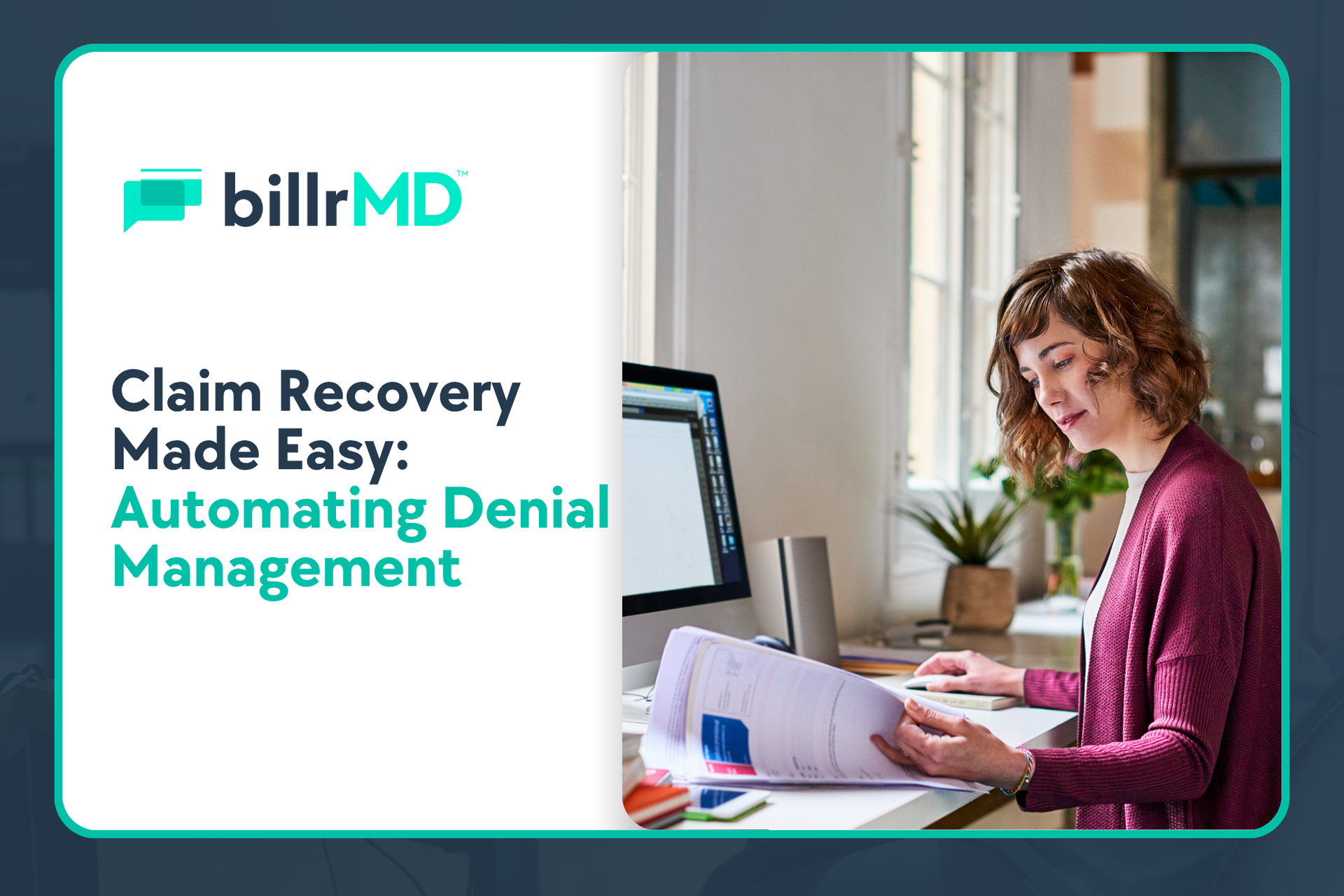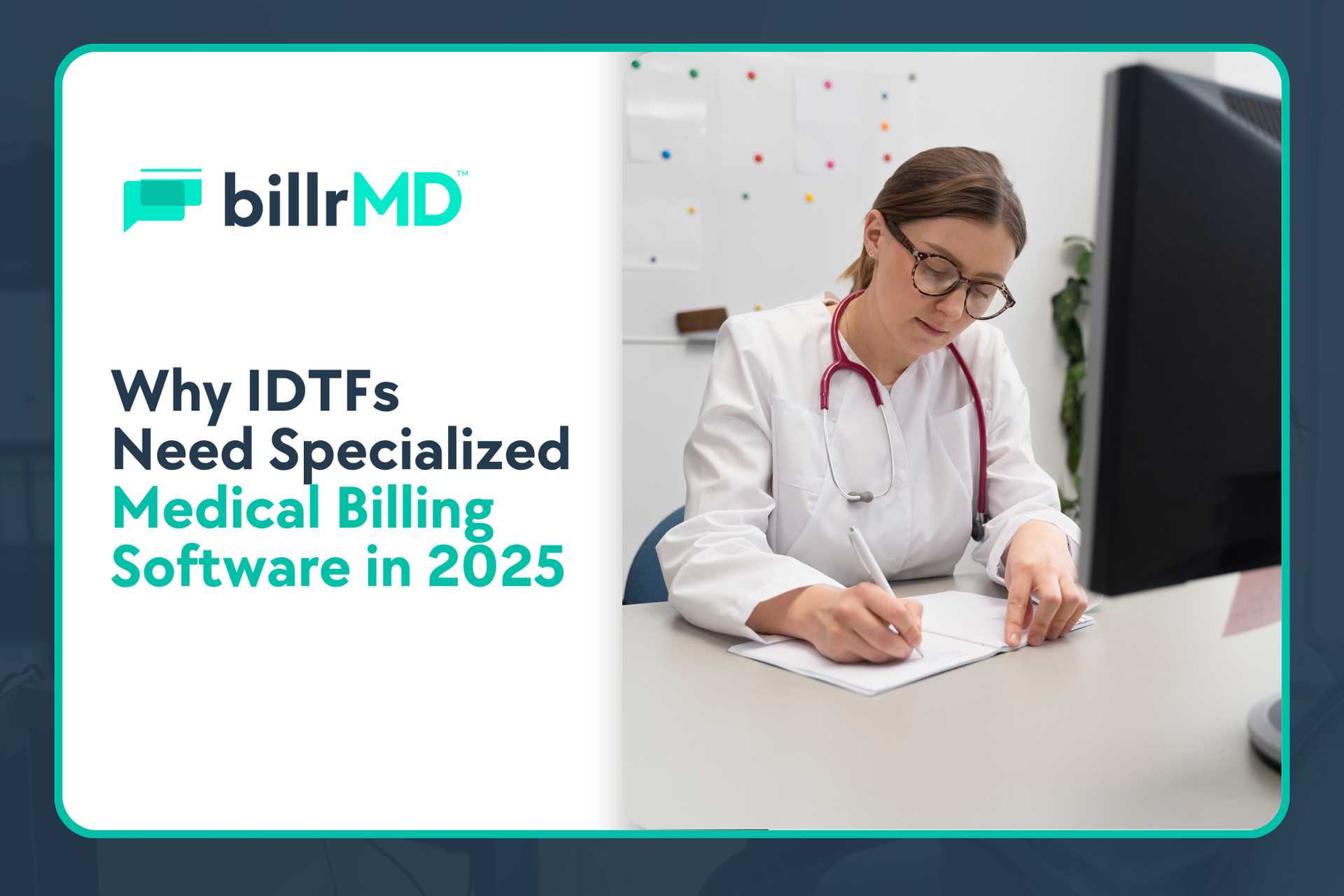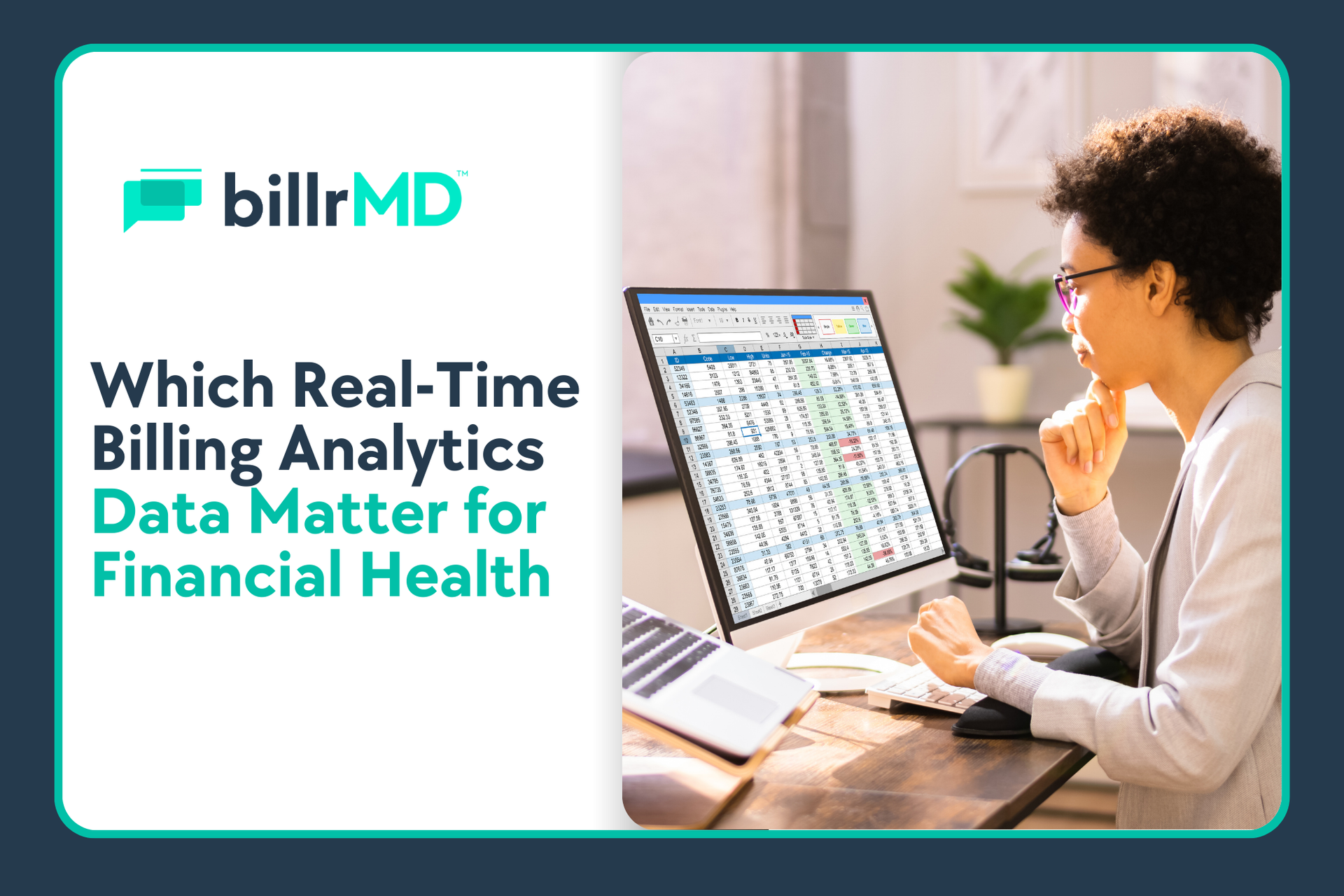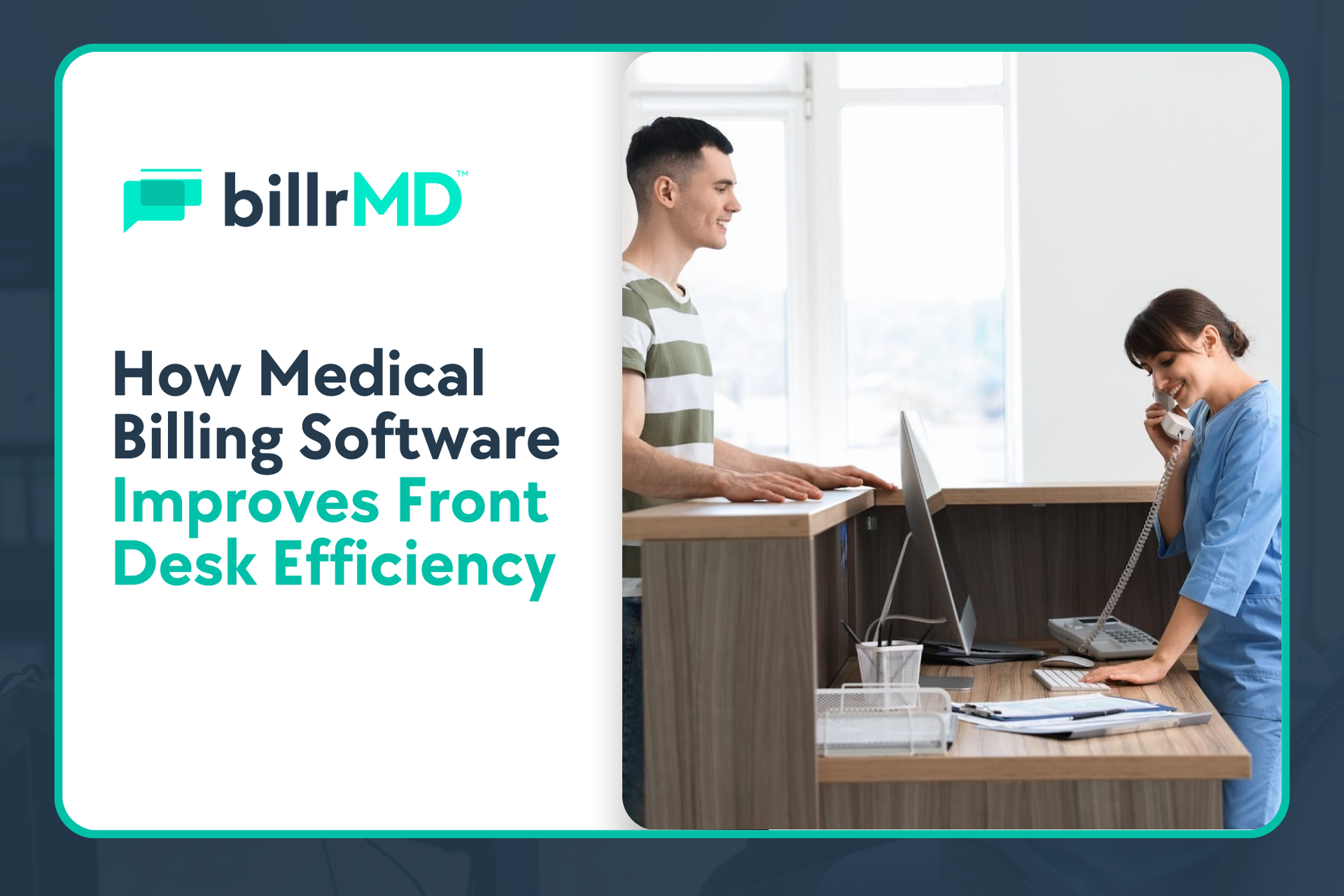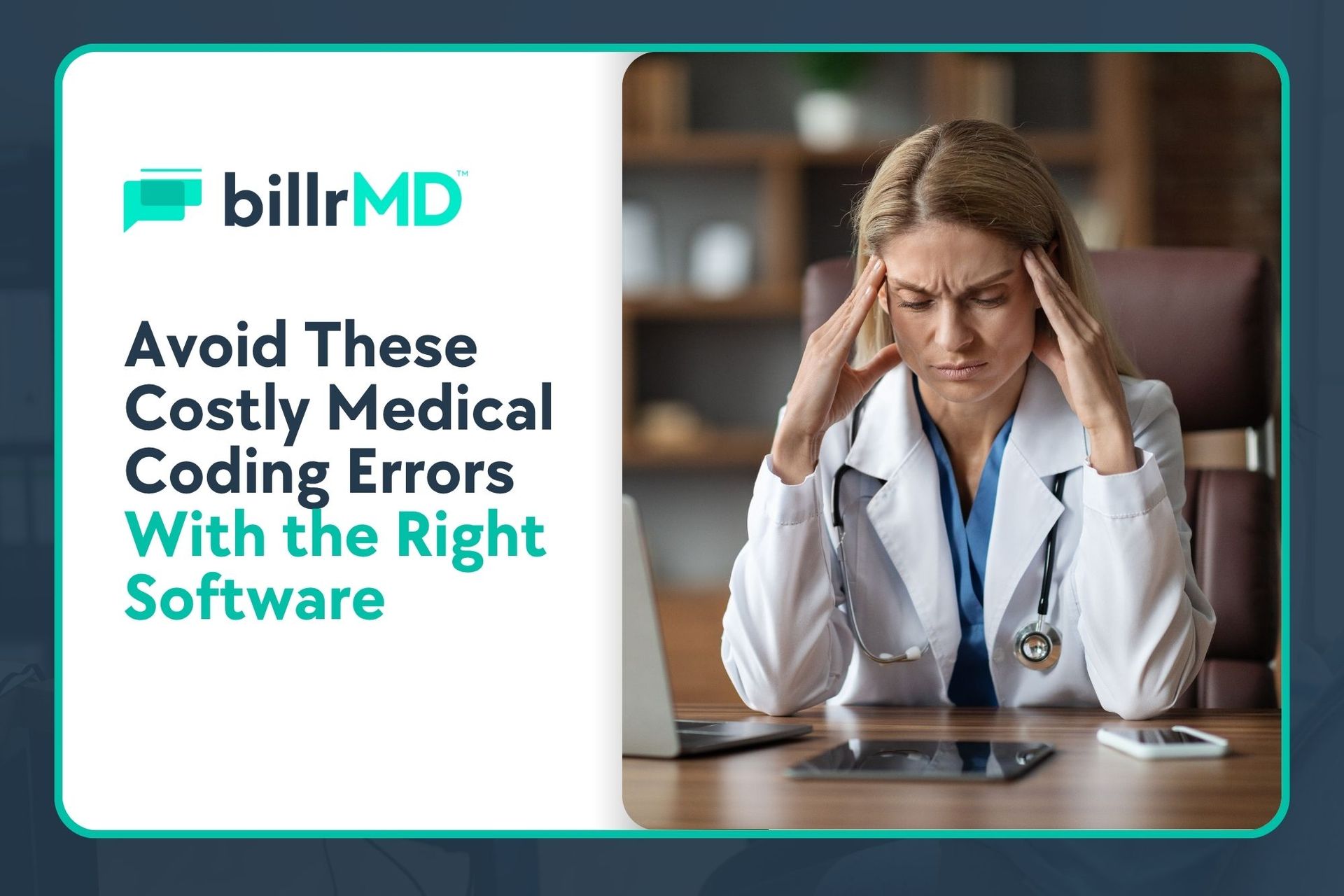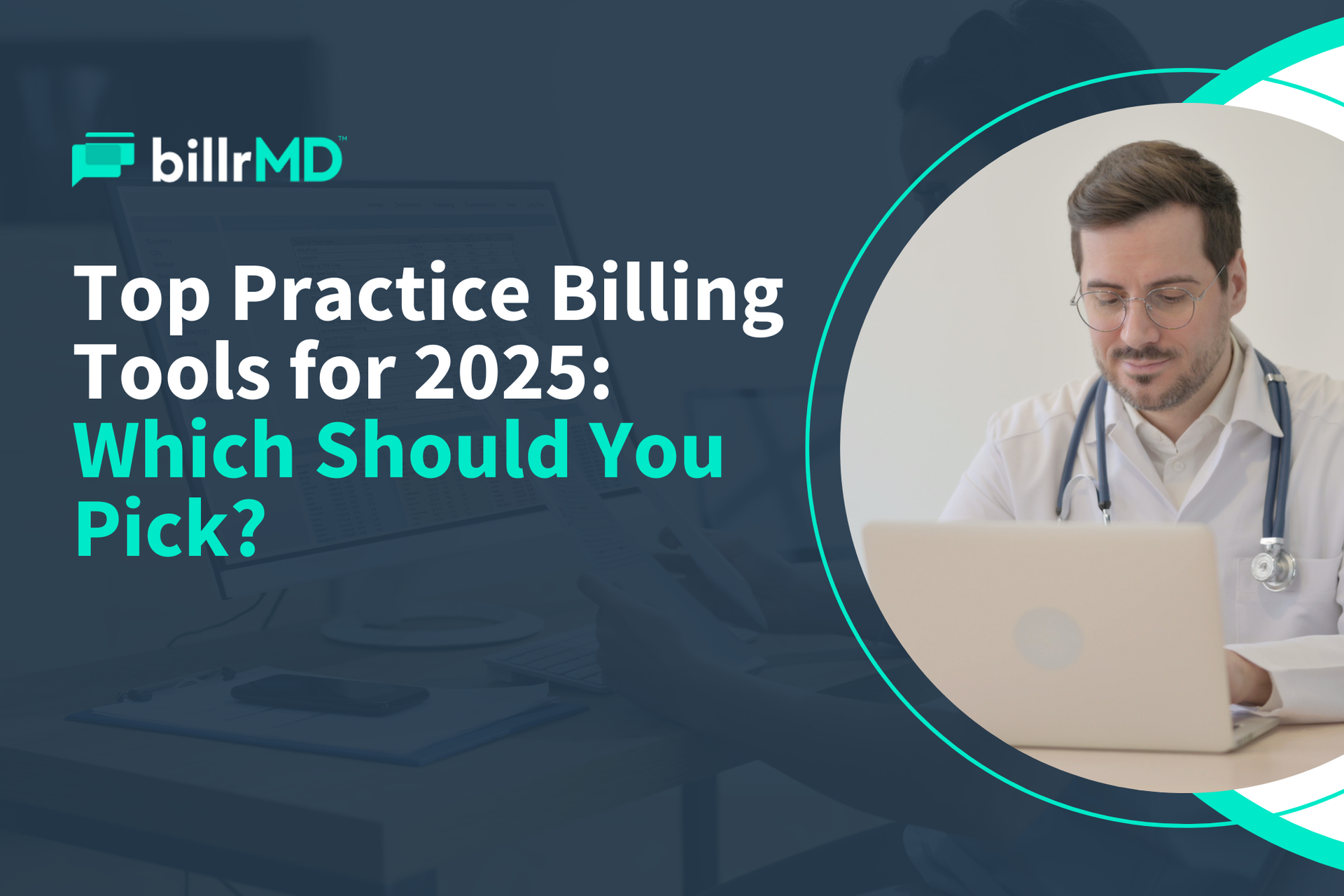A 2025 Medical Group Management Association (MGMA) stat poll revealed that 56% of medical groups saw growth in their revenue cycle management compared to 2024. While that’s a promising sign, it also means that nearly half are still facing financial hurdles, many of which stem from inefficient processes around patient payments.
When practices don’t (or can’t) meticulously track payments, it can lead to missed balances, billing confusion, and delays in collections, which affect your finances and frustrate staff and patients.
Every missed payment is lost revenue, and billrMD was built to prevent that. Our
medical billing software helps you improve cash flow, reduce administrative burdens, and get paid faster while providing a smoother experience for both your team and your patients.
Reclaim Your Time and Revenue
Why Patient Payment Tracking Matters
Tracking patient payments plays a critical role in optimizing your revenue cycle performance. As patients take on more financial responsibility and billing becomes increasingly complex, having a simple and organized way to track payments is essential for maintaining financial health.
Patient Responsibility Is Growing
With more patients enrolled in high-deductible health plans (HDHPs), many practices are seeing a shift in their revenue sources, with more payments coming directly from patients. If you don’t have an
efficient medical billing solution to track these payments, it becomes harder to maintain a stable cash flow.
Manual Processes Lead to Mistakes in Patient Billing
Relying on spreadsheets, disconnected systems, or paper-based tracking increases the risk of missed payments, duplicate billing errors in patient statements, inaccurate balances, and inconsistent follow-ups. These issues slow down your collections and erode patient trust.
Visibility Improves Performance
When payments are tracked clearly and consistently across your systems, your team can follow up with confidence, your patients receive accurate and easy-to-understand statements, and your collection process becomes more organized and efficient.
The Challenges in Patient Payment Tracking
Your practice will run into the same roadblocks that slow down collections and strain operations if you don’t have the right systems in place.
- Limited Visibility Across Teams
When front desk, billing, and collections teams aren’t working using the same data, things fall through the cracks. Payments get overlooked, balances go unaddressed, and patients receive conflicting information.
- Disconnected Systems
EHRs, billing software, and payment platforms that don’t sync create extra work. Staff end up switching between systems, manually transferring data, and struggling to see the complete picture.
- Inconsistent Follow-Ups
Without a clear process for follow-ups, overdue balances can get glossed over. Some patients get reminders, others don't—leading to uneven collections and unnecessary delays.
- Manual Errors and Delays
Manual data entry leaves room for mistakes such as misapplied payments, incorrect balances, or missed charges.
- Patients Not Understanding Their Bills
Unclear statements or unexplained charges can
confuse patients and slow down payments. When patients are unsure of what they owe or why, they're less likely to pay on time.
Best Practices for Better Payment Tracking
Effective payment tracking begins with reliable systems paired with disciplined workflows. Here are some best practices that help you stay on top of outstanding balances, reduce billing delays, and get paid faster.
- Centralized Payment Tracking System
Consolidate payment data into a single platform that your billing, administration, and finance teams can access. This minimizes miscommunication, reduces duplicated work, and ensures no outstanding balance goes unnoticed.
- Set Clear Internal Follow-Up Protocols
Define when and how your team follows up on unpaid balances. Whether it’s a first reminder at 7 days or an escalation at 30 days, having a consistent timeline helps reduce aging accounts and keeps patients informed.
- Communicate Balances Clearly and Early
Make sure patients receive accurate and timely information about what they owe. This includes post-visit statements, payment reminders, and follow-up notices that are easy to understand and delivered through preferred channels (email, SMS, etc.)
- Offer Flexible and Convenient Payment Options
Patients are more likely to pay on time
when they can choose how to pay. Online portals, credit card options, and mobile-friendly access can significantly reduce friction and improve collection rates.
- Regularly Review Outstanding Balances
Assign a team member or process to review overdue payments on a weekly basis. By identifying bottlenecks or common reasons for delay (e.g., denied claims, incorrect patient info), you can fix systemic issues before they escalate.
- Align Your Staff on Billing Workflows
Everyone involved in the payment process, from the front desk to finance, should understand how balances are tracked and escalated. Regular training ensures consistency and reduces the risk of follow-up gaps or mixed messages to patients.
Implementing even a few of these strategies can make a significant difference in your cash flow and patient experience while minimizing inaccurate patient payment records. And when supported by tools like billrMD, the process becomes even more efficient and less stressful.
How billrMD Helps You Track Payments and Get Paid Faster
Manually implementing these strategies can seem daunting, but it’s easier when you have a platform built for revenue cycle management in medical billing, like billrMD. Here’s how our cloud-based solution puts all six best practices to work for you:
- Provide End-to-End Visibility
Our web-based billing software platform provides your team with a clear, real-time view of every patient’s financial activity, from their initial appointment to final payment.
- Track Payments in Real Time
Every transaction, payment status, and follow-up activity is automatically tracked within your system, so you can stay on top of each patient’s account history without switching between platforms.
- Automate Reminders & Digital Statements
billrMD helps reduce missed payments with scheduled email and SMS reminders. Patients also receive clear, professional digital statements and direct links to pay.
- Offer Secure, Convenient Online Payment Options
With billrMD’s user-friendly portal, patients can view their current balance, make secure one-time or recurring payments, and use multiple payment methods, including credit cards, HSA/FSA cards, and ACH transfers—from any device.
- Integrate Seamlessly with EHR and Claims Systems
Our comprehensive
web-based medical billing software integrates with major EHR and claims platforms to ensure real-time syncing. This means fewer delays, fewer errors, and a more efficient workflow for your staff.
- Use Analytics to Improve Collections
billrMD gives you the data you need to make smarter, faster decisions by identifying bottlenecks, monitoring team activity, and enhancing collection outcomes with real-time analytics.
Check out this video showing how billrMD simplifies and tracks the entire payment process.
Improving the way you track and manage patient payments can amount to real, measurable change across your entire billing cycle. With billrMD in place, you can:
- Scale your practice confidently, knowing your billing team can handle growth.
- Attract and retain top talent by eliminating redundant manual processes.
- Build stronger patient relationships through transparent, stress-free billing.
- Future-proof your operations with technology that evolves with healthcare regulations.
`
Our
medical billing software has helped numerous medical practices, billing companies, and diagnostic facilities reduce their accounts receivable by 60% while optimizing their revenue cycle management.
Turn tracking payments from a burden into a business advantage. Contact billMD today and experience how our 20+ years of healthcare technology expertise can accelerate your practice’s financial success.
Make Every Payment Count with Smarter Billing



